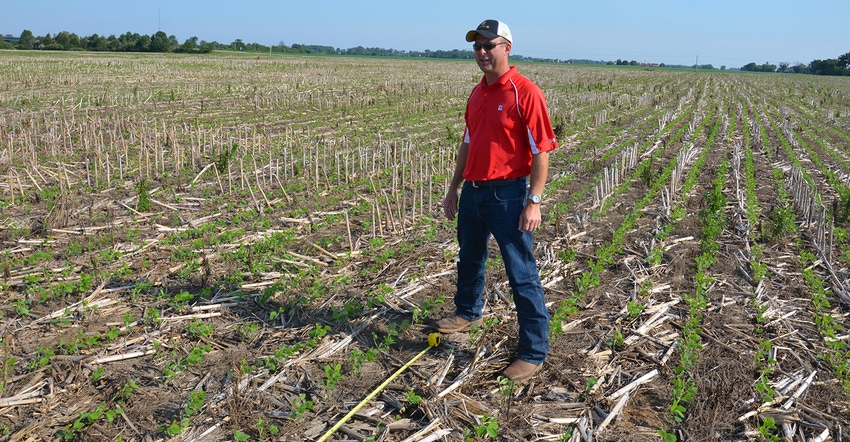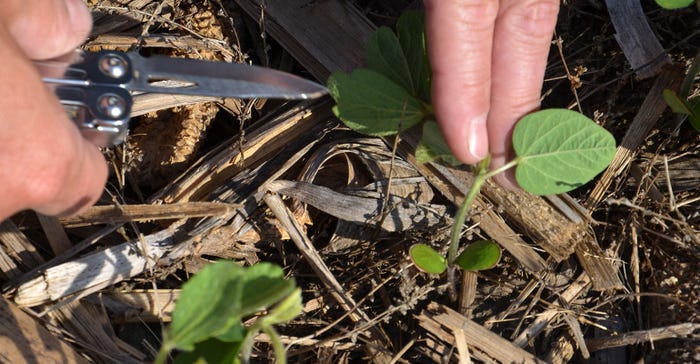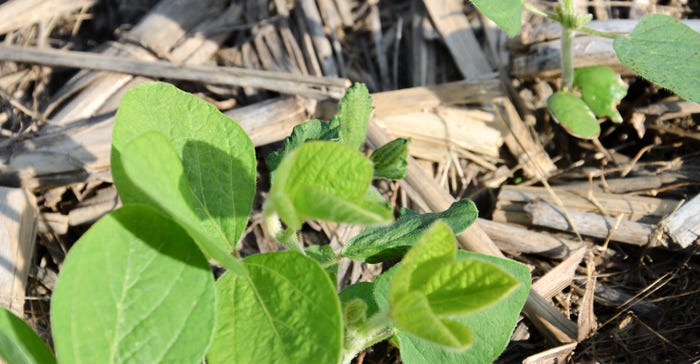
One agronomist was very surprised when he learned that Steve Gauck found slugs in soybeans around July 1. The agronomist figured they should have been gone weeks ago.
“Normally they would have been,” says Gauck, a sales agronomist for Beck’s. But this year, conditions allowed them to hang around. Many fields needed replanting.
The Soybean Watch ’17 field didn’t need replanting, but stands were reduced. The field was planted June 6. The late planting date may have helped it escape some of the worst of the slug onslaught, although plants were still affected and some died, Gauck says.
Beck’s sponsors Soybean Watch ’17. Besides finding slugs, Gauck explains other things you can find early in the season if you park the pickup and walk the field.
Key observations
Here are five things Gauck noticed on his trip through the Soybean Watch ’17 field.
1. Seedlings fought back against slugs and sent out new buds. Where there is a bud, a branch could form, Gauck says. He found several plants up and down the rows he checked that were damaged by slug feeding (see photo below), but that were already sending out new buds and new growth. “Those guys will make it,” he notes.

2. Nitrogen nodules were hard at work pulling in N and keeping plants green. “There are a surprising number of nodules on seedlings we dug up for soybeans only planted about three weeks,” Gauck says. Several varieties with varying seed treatments were planted in the field, and all plants checked seemed to have good nodulations.
“The nodules were pink inside, indicating that the bacteria were at work capturing nitrogen,” Gauck notes.



4. There were thin brown rings on the edge of some cotyledons. Gauck spotted some cotyledons with a thin brown ring. “That’s the symptom that occurs when you use Ilevo seed treatment,” he says. “We would have to do some homework to see if the rows where we saw it most were treated with Ilevo. It’s a new seed treatment that helps control sudden death syndrome.
“There is absolutely no effect from the browning on the edges of cotyledons. It’s just a characteristic that typically goes along with iLevo seed treatment.” He also notes it’s possible that other conditions could cause the same symptom on the cotyledons.

5. Even an agronomist can’t explain everything he or she finds. Note the odd-shaped, crinkled leaves on the soybean plant in the center of the photo. They are positioned just behind normal leaves. Two plants in a row displayed the symptom.
What caused the deformity? “It’s hard to say,” Gauck says. “Sometimes we just don’t have a quick explanation.”
However, he is tracking down that it may be a reaction to certain chemicals. He has also noticed similar symptoms in a few other fields.

About the Author(s)
You May Also Like




